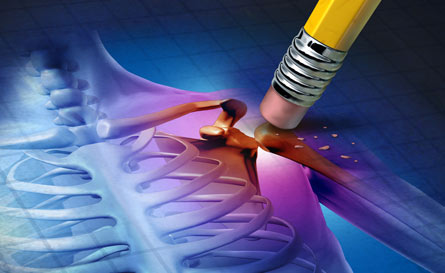Omaha Shoulder Anatomy
Shoulder Anatomy
Learn about the Shoulder from Darren Keiser MD
In this article, you will learn about the anatomy of the shoulder. To better understand the shoulder, its best to begin with shoulder anatomy. The shoulder is the most mobile joint in your body. Although the anatomy of the shoulder is quite complex, I will try to keep it as simple as possible.
What most people call the shoulder is really several joints that combine with tendons and muscles to allow a wide range of motion in the arm — from scratching your back to throwing the perfect pitch.
Mobility has its price, however. It may lead to increasing problems with instability or impingement of the soft tissue or bony structures in your shoulder, resulting in pain. You may feel pain only when you move your shoulder, or all of the time. The pain may be temporary or it may continue and require medical diagnosis and treatment.
Shoulder Anatomy
Learn about Shoulder Anatomy from Darren Keiser
The bony anatomy of the shoulder consists of the upper arm (the proximal humerus) and the shoulder blade (the scapula). The ball of the shoulder socket is called the humeral head. The shoulder socket is called the glenoid. The roof of the shoulder originates from the scapula and forms a bony arch. This roof coming from the back of the scapula is called the acromion. The bony arch originating from the front of the shoulder is called the coracoid process. The ligament connecting the coracoid process and the acromion is called the coracoclavicular ligament.
Causes of Shoulder Pain
Most shoulder problems fall into four major categories:
- 1. Tendon inflammation (bursitis or tendinitis) or tendon tear
- 2. Instability
- 3. Arthritis
- 4. Fracture (broken bone)
- 5. Other much less common causes of shoulder pain are tumors, infection, and nerve-related problems.
Description of Shoulder Anatomy
Learn more about Shoulder Anatomy
 Your shoulder is made up of three bones: your upper arm bone (humerus), your shoulder blade (scapula), and your collarbone (clavicle).
Your shoulder is made up of three bones: your upper arm bone (humerus), your shoulder blade (scapula), and your collarbone (clavicle).
The head of your upper arm bone fits into a rounded socket in your shoulder blade. This socket is called the glenoid. A combination of muscles and tendons keeps your arm bone centered in your shoulder socket. These tissues are called the rotator cuff. They cover the head of your upper arm bone and attach it to your shoulder blade.
The acromion meets the collarbone (clavicle) at a junction called the AC joint (Acromioclavicular joint).
There are several other ligaments that connect the bones of the shoulder together and work to stabilize the shoulder.
Ligaments in Shoulder Anatomy
What are the Ligaments in the Shoulder?
The rotator cuff is a group of four muscles that originate on the shoulder blade and pass around the shoulder to where their tendons fuse to the ball of the humerus.
All four tendons of the rotator cuff help with shoulder movement, and also work to keep the ball of the shoulder in the socket.
The supraspinatus is the most commonly torn tendon of the rotator cuff. It attaches to the top of the humerus and enables outward reaching.
The infraspinatus and the teres minor tendons attach to the back of the humerus and act together to externally rotate the arm.
The subscapularis tendon is the least commonly torn tendon of the rotator cuff, and attaches in the front of the humerus. It acts to internally rotate the arm.
The humeral head (ball) and the glenoid (socket) have a smooth white surface coating called cartilage that allows smooth gliding shoulder joint motion.
The labrum is the ring of cartilage that surrounds the socket and helps with shoulder stability.
The biceps tendon at the shoulder travels in between the supraspinatus and the subscapularis tendons to attach at the top of the socket.
The complex anatomical arrangement of the shoulder makes it vulnerable to injury. The shoulder can be damaged from traumatic injury, repetitive overuse, or the wear and tear of life. If any one of these structures is damaged, shoulder function is compromised.
Click on shoulder conditions to learn more!
Omaha shoulder information provided by Dr. Darren Keiser MD
